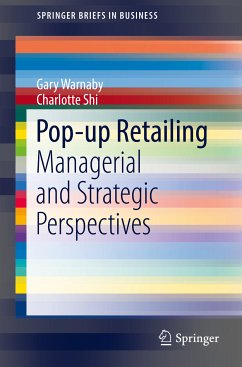This SpringerBrief offers an academic perspective on the trend of 'pop-up' retailing. It analyzes this temporary retail-oriented setting designed to foster a direct customer-brand interaction for a limited period, often with an explicitly promotional or communicative purpose. Adopting a managerial approach, it explores the use of pop-up retailing as a means of facilitating strategic growth by retail brands. In addition, it draws on theory from retail store environments and atmospherics, customer experience management and event management to provide an in-depth academic analysis of the planning and implementation issues arising from the inherent ephemerality of pop-up activities to achieve the strategic objectives of retail brands.
The authors provide an overview of the entire pop-up lifecycle using an organizational schema that is split into four sequential stages: strategic objectives, pre-pop-up, actual pop-up experience, and the post pop-up stage. The key decision areas and activities incorporated in each of these stages are also outlined.
Dieser Download kann aus rechtlichen Gründen nur mit Rechnungsadresse in A, B, BG, CY, CZ, D, DK, EW, E, FIN, F, GR, HR, H, IRL, I, LT, L, LR, M, NL, PL, P, R, S, SLO, SK ausgeliefert werden.









